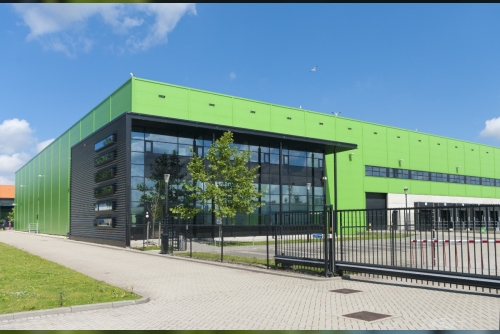Bharat Book Bureau Provides the Trending Market Research Report on “Plasma Fractionation Market by Product [Immunoglobulins (Intravenous, Subcutaneous), Coagulation Factors, Albumin], Application (Immunology, Hematology, Neurology), and End User (Hospital, Clinical Research Lab, Academic Institutes) - Forecast to 2029” under the Life Sciences Market Research Report Category. The report offers a collection of superior Market research, Market analysis, competitive intelligence, and Market reports.
Plasma Fractionation Market by Product [Immunoglobulins (Intravenous, Subcutaneous), Coagulation Factors, Albumin], Application (Immunology, Hematology, Neurology), and End User (Hospital, Clinical Research Lab, Academic Institutes) - Forecast to 2029.
The global plasma fractionation market is expected to grow at a CAGR of 7.1% from 2022 to 2029 to reach $46.88 billion by 2029.
Succeeding extensive secondary and primary research and in-depth analysis of the market scenario, the report carries out the key industry drivers, restraints, challenges, and opportunities. Manufacturing plasma-derived therapeutics requires regulated industrial processes to ensure optimal safety, quality, and recovery. Plasma derivatives are considered important therapeutic resources, owing to which the demand for plasma derivatives is rising. The plasma fractionation market is driven by the increasing prevalence of chronic diseases across all age groups, the growing use of immunoglobulins in various therapeutic areas, and the expansion of plasma collection centers. Further, the growing prevalence of blood and respiratory diseases is creating opportunities for market growth. However, factor such as government regulations in developing countries hampers the growth of this market to a certain extent.
Based on product, the plasma fractionation market is segmented into immunoglobulins, coagulation factors/concentrates, albumin, and protease inhibitors. In 2022, the immunoglobulins segment is expected to account for the largest share of the global plasma fractionation market. The growth of this segment is attributed to the large commercially available plasma-derived immunoglobulins compared to other products and the growth in the use of immunoglobulins, especially for primary immune deficiency.
Based on application, the market is segmented into immunology, hematology, neurology, critical care, hematology-oncology, rheumatology and orthopedics, and other applications. In 2022, the neurology segment is expected to dominate the plasma fractionation market. The growing prevalence of neurological disorders and the wide use of plasma-derived products for treating them is the major driving factor for this segment’s growth.
Based on end user, the global plasma fractionation market is categorized into hospitals & clinics, clinical research laboratories, and academic institutes. In 2022, the hospitals & clinics segment is estimated to dominate the plasma fractionation market. The growing use of plasma-based products in multiple therapy areas, the growing number of hospitals, and the rising healthcare expenditure are some of the major factors driving the growth of this segment.
An in-depth analysis of the geographical scenario of the plasma fractionation market provides detailed qualitative and quantitative insights into the five major geographies (North America, Europe, Asia-Pacific, Latin America, and the Middle East & Africa) along with the coverage of major countries in each region. North America is estimated to command the largest share of the global plasma fractionation market in 2022, followed by Europe, Asia-Pacific, Latin America, and the Middle East & Africa.
Some of the key players operating in the global plasma fractionation market are CSL Limited (Australia), Grifols, S.A. (Spain), Octopharma AG (Switzerland), Kedrion S.P.A. (Italy), Shire plc (U.K.), Biotest AG (Germany), China Biologic Products Holdings, Inc. (China), Bio Products Laboratory Ltd (U.K.), Japan Blood Products Organization (Japan), and Intas Pharmaceuticals Ltd. (India).
Key Questions Answered in the Report-
•Which are the high-growth market segments in terms of product, application, end user, and geography?
•What is the historical market size for the plasma fractionation market?
•What are the market forecasts and estimates for the period 2022–2029?
•What are the major drivers, restraints, opportunities, and challenges in the plasma fractionation market?
•Who are the major players in the market, and what share of the market do they hold?
•Who are the major players in various countries, and what market share do they hold?
•How is the competitive landscape for the plasma fractionation market?
•What are the recent developments in the plasma fractionation market?
•What are the different strategies adopted by the major players in the market?
•What are the key geographic trends, and which are the high-growth countries?
•Who are the local emerging players in the gluten-free products market, and how do they compete with other players?
Browse our full report with Table of Content:
About Bharat Book Bureau:
Bharat Book is Your One-Stop-Shop with an exhaustive coverage of 15,00,000 reports and insights that includes latest Market Study, Market Trends & Analysis, Forecasts Customized Intelligence, Newsletters and Online Databases. Overall a comprehensive coverage of major industries with a further segmentation of 100+ subsectors.
Contact us at:
Bharat Book Bureau
Tel: +91 22 27810772 / 27810773
Email: [email protected]
Website: www.bharatbook.com









 NSE 7 - FortiSASE 25 Enterprise Administrator NSE7_SSE_AD-25 Dumps
NSE 7 - FortiSASE 25 Enterprise Administrator NSE7_SSE_AD-25 Dumps


